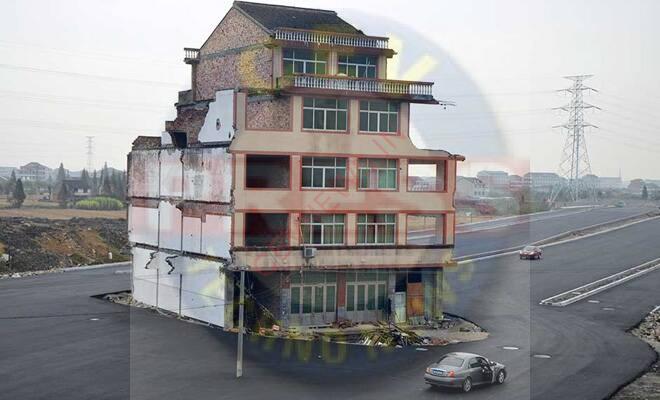Amid the current slowdown in the real estate sector where developers are struggling to sell their inventory,the low-income segment of the residential market has shown steady growth,according to a report. During the period from June 2011 to January 2013,there were 132 projects launched across 22 cities that offered at least 30,500 units priced under Rs 10 lakh.
The absorption too,has been high,with an average of 70 per cent for projects launched between June 2011 to May 2012,and 45 per cent for the six-month period beginning May 2012. This comes at a time when the average absorption rate for mid- and high income group residential projects fell to below 15 per cent during the same period,according to real estate consultancy Jones Lang LaSalle.
Low income housing is no longer a subject confined to seminar rooms and academic studies it is a viable business opportunity,says Monitor Deloitte,a unite of consulting firm Deloitte that has brought out the report State of the low-income housing market,after extensive surveys in tier I,II and III markets.
A key finding of the report is that the market is beginning to serve the low-income customer. No longer is it a corporate social responsibility initiative on the part of large developers to venture into low income housing. There has been an emergence of developers who are catering exclusively to this segment, says Vikram Jain,head-low income housing practice,Monitor Inclusive Markets,a unit of Deloitte India.
Among the cities surveyed,Ahmedabad,Mumbai suburbs and Indore have the maximum number of such projects.
Among the developers surveyed,over 90 per cent intend to continue developing houses for the low income segment,and with good reason. At least 80 per cent of the inventory is sold within 12 months.
There are,however,several challenges to unlocking this fortune at the bottom of the pyramid. The first is land prices. This is the reason why the number of units on offer has come down,an average of 500 units after 2010,even as the number of projects increased.
Developers are resorting to mixed developments where a portion is low-income while the others are middle-income offerings. Prior to 2010,the average number of units offered stood at 3,000. Finding parcels of land at affordable rates is getting increasingly difficult to find especially in the vicinity of metros such as Mumbai,which means going further into the suburbs,which comes with its own set of problems. A buyer would factor the travel time from the home to the workplace.
Next comes approvals,for they take 24 months on an average. For a developer in this segment,keeping costs low is the key,and longer approval times mean cost escalation, says Sachin Kulkarni,MD,Vastushodh Projects that has projects in Navi Mumbai,Pune and Kolhapur.
The buyer also faces one challenge: access to finance. The report cites the presence of several housing finance companies who are funding such buyers,but their numbers are few and restricted only to a few markets. The key issue is to get banks to finance such buyers.
When I began developing my project,I found that buyers were queuing up but only a minuscule number could get a home loan. The others could not,as banks had tailored their scoring mechanism to the high income buyer, says Raghav Garg,MD,Garg Group that is developing a low-income housing project in Pilkhuwa,located 20 kilometres from Ghaziabad in Uttar Pradesh.
Garg had to persuade the State Bank of India to change its mechanism,which it did. This has now got the housing ministry interested and is exploring on ways to get other banks to come up with a mechanism that takes into account the situation of a low-income borrower.
The other issue is that local governments are not sufficiently sensitised to the need for private sector developers to enter this space. The first question we were confronted was,why are you developing such houses? It is the job of the state government, says Garg,about his interaction with the local authorities at the time of applying for approvals. Ghaziabad,where I am based,has several slums that keep sprouting up,that are then regularised. But I find it difficult to offer housing for the low-income population.
A related challenge is the lack of master plans for areas where such housing typically comes up. Banks are willing to finance only those projects that come up in areas with a master plan. There are several towns and cities where the demand is high,but we are not able to venture for they lack master plans, says Getamber Anand,president-elect,Confederation of Real Estate Developers Associations of India (Credai).
The next issue is regulation. Currently the policy direction is tailored towards increased FSI (floor space index),with high rises being seen as a solution to the problem of affordability. FSI does not work in all markets, says Kulkarni.
Regulations being followed for a usual middle/high income project is being followed for such projects as well. What purpose does it serve when I am building two low rise developments with small units separated by a 70 feet road? We need a new set of rules for such projects, says Garg.
Kulkarni calls for a special environmental certification mechanism for low-income projects so that more supply can enter on larger tracts of land and would not get caught in environmental clearance tangles due to the threshold norms. There has also got to be a mechanism for reserving lands in non-metros for such projects, says Kulkarni.
Developers in this space are exploring new technologies that bring in a manufacturing mind set to housing projects. However,they are not taking off since projects are scattered and havent reached numbers that can afford economies of scale. There is also the issue of excise duty. The raw materials are taxed,and so is the finished product. This has to be rationalised, says Kulkarni.
With nearly 49 per cent of such home buyers being under 35 years,there is a huge opportunity waiting to be tapped,says the report,and identifies enabling environment as a key deliverable from the government to enable home ownership.

